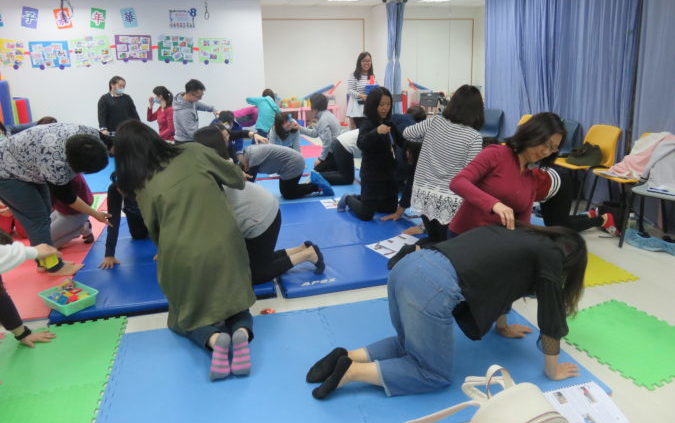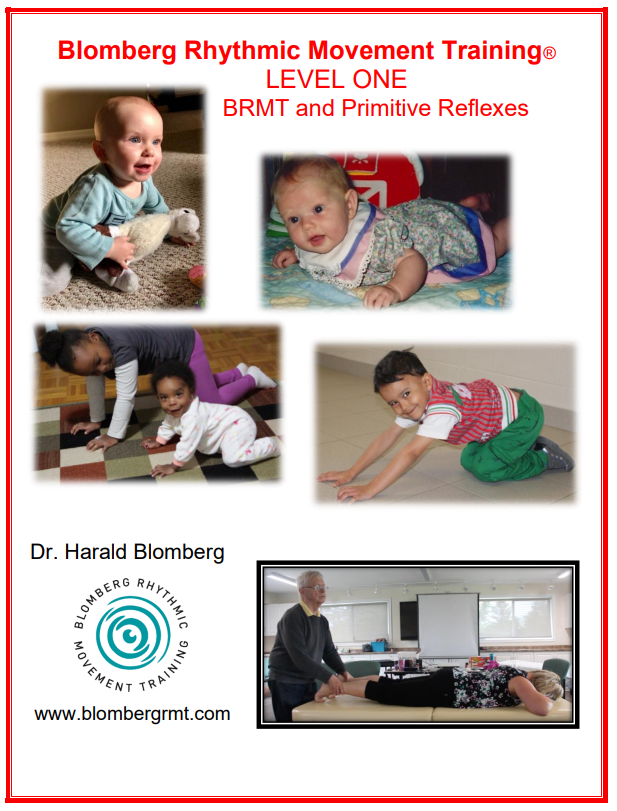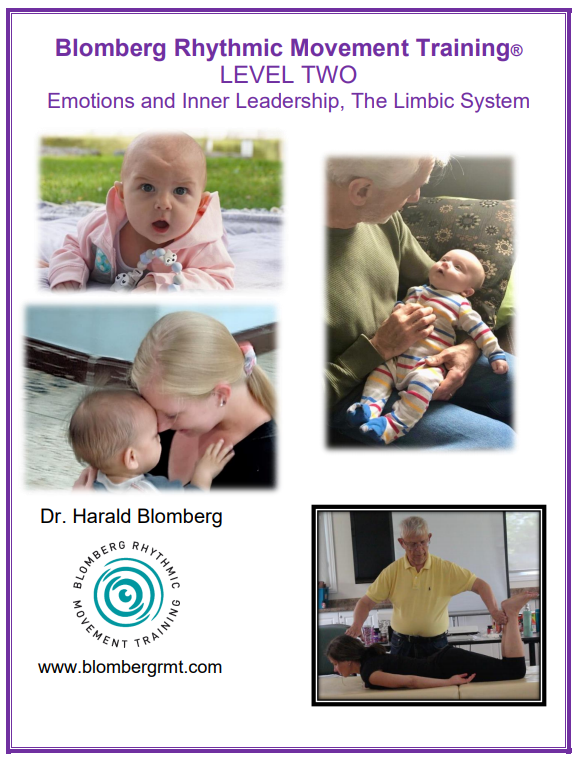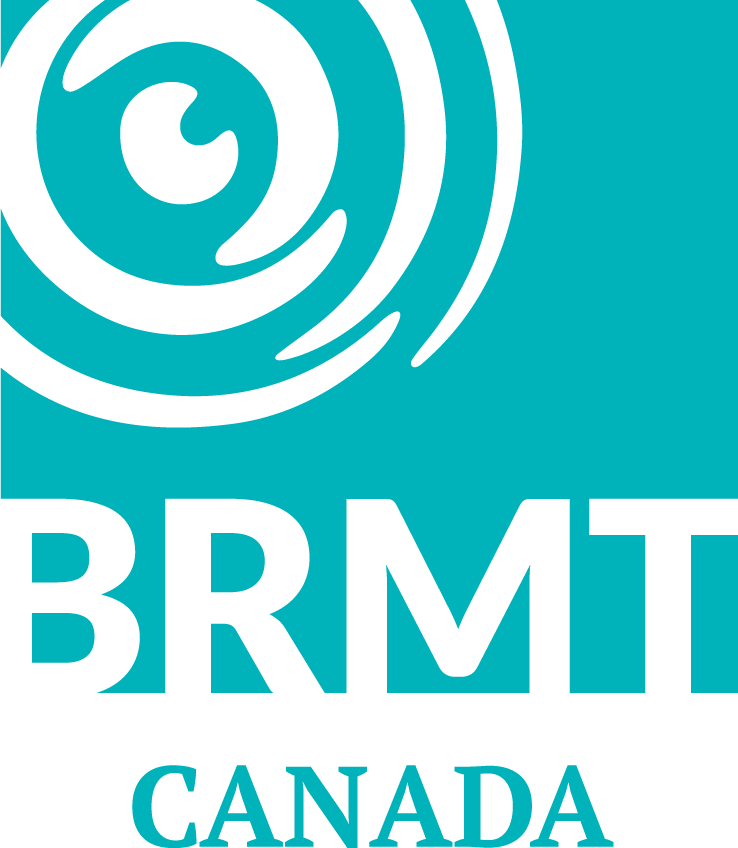Courses & Workshops
BRMT Canada courses and workshops are an excellent way to gain understanding of the importance of reflex integration for both children and adults.
Blomberg Rhythmic Movement Training Courses


BRMT Level One
Rhythmic movement training and primitive reflexes
Level One is a comprehensive introduction to Blomberg Rhythmic Movement Training. In this course, participants learn the basics of BRMT and gain an understanding of how rhythmic exercises can be utilized to regulate muscle tone and stimulate the brain, improve attention, impulse control, and physical development.
This course involves a combination of theory and practice. Reflexes covered include, but not limited to: Tonic Labyrinthine Reflex (TLR), Symmetrical Tonic Neck Reflex (STNR) and Babinski. Participants learn about the brain stem, cerebellum, and basal ganglia.
No previous experience required.
In Person classes: 16 and a half hours teaching time (CEU hours 16)
Online classes: 18 hours, 2 hours in breaks (CEU hours 16)

BRMT Level Two
Rhythmic movement training, emotions, and inner leadership, the limbic system
Participants will study the relationships between reflexes and our emotions, our challenges, our fears, and paralysis due to fear. It clarifies the role of the limbic system in emotional control and stress, and how the BRMT integrative exercises are very effective for working with individuals with Autism, ADHD, OCD, emotional outbursts, self-regulation challenges, sensory difficulties, and many other issues.
The course also deals with reflexes that especially affect our emotions: the Fear Paralysis reflex, the Moro reflex and the Tendon Guard reflex. It is a necessary tool for anyone who wishes to work with rhythmic movement training.
Prerequisite: BRMT Level One
In Person classes: 16 and a half hours teaching time (CEU hours 16)
Online classes: 18 hours, 2 hours in breaks (CEU hours 16)

BRMT Level Three
Rhythmic movement training and Reflexes in Dyslexia, and more
This course deals with how our reading and writing ability is affected by various factors such as vision, articulation and motor ability. We learn how to test for non-integrated primitive reflexes and recognize other motor disabilities that are important for dyslexia.
Additionally, we learn how to improve reading and writing ability by correcting these problems with rhythmic exercises and reflex integration. Emphasis is placed on recognizing visual problems and improving vision and reading by combining rhythmic and visual exercises.
Prerequisite: BRMT Level One
Highly recommended: BRMT Level Two

Have questions about our courses?
To request information about courses, or to set up a training in your city, do not hesitate to write to us!
Primitive Reflexes
Postural Reflexes
- The Amphibian Reflex
- Crawling Reflex
- Neck and Head Righting Reflexes
Bridge or Transitional Reflexes
Special Courses in the Training Curriculum
BRMT for Early Childhood Education
Games and Activities to Assist Reflex Integration
In this 2-day, course, the basics of rhythmic movements are taught in a similar way to that done in level 1 with the exception of isometrics. This course teaches us how to use rhythmic movements with children in the early years of education (preschool to grade 3), recognize and evaluate primitive reflexes that affect the motor, emotional and cognitive development of preschool and elementary age children. Rhythmic movements and games are specially adapted to help support integration of the following reflexes: Moro, Fear Paralysis, Tonic Labyrinthine (TLR), Landau, Spinal Galant, Amphibian, Babinski, Hand Grasp, Symmetrical Tonic Neck Reflex (STNR), Asymmetrical Tonic Neck Reflex (ATNR).
No previous experience required.

BRMT for Sustainable Health
Part 1: Root causes of chronic inflammation and their impact on reflex integration
This 2 day in-person course deals with the great importance of diet and food supplements when working with rhythmic movements, not only in autism but also in ADHD, dyslexia and motor problems. Food intolerance is becoming more and more common and may interfere with the training.
This course teaches how to test for food intolerance and also for food supplements the individual may need. The course also deals with primitive reflexes which are especially common in autism and how to conduct the training with children experiencing autism and ADD.
No previous experience required. Highly recommended: BRMT Level 1 and 2
In Person classes: 16 and a half hours teaching time
Online classes: 18 hours, 2 hours in breaks

BRMT for Sustainable Health
Part 2: Strategies to support individuals with chronic inflammation
This course is a continuation of Diet Course 1, with more emphasis on
supplementation, oxidative stress, brain inflammation, and detoxification.
Modern medical science has now recognizing the fact that chronic inflammation is the common cause of many disorders e.g. autism, ADHD, chronic fatigue syndrome and depression. This course explains what chronic inflammation is and summarizes its causes.
Most children with autism examined with bio resonance by Harald Blomberg have turned out to have severe deficiency of vitamins such as B12, B6 and minerals such as zinc, phosphates and others. Common causes of such deficiencies are pyroluria and B12 deficiency. The course explains how such deficiencies cause chronic inflammation and how to test for and treat these deficiencies to make optimal healing possible of
many symptoms both in autism and many other disorders.
The course addresses parents and caregivers of autistic children as well as people who want to learn more about vitamin and mineral deficiency in chronic inflammation and detoxification disorders, especially pyroluria and B12 deficiency.
No previous experience required. Highly recommended: BRMT Level 1 and 2

BRMT for Pain Management in Adults
Part 1 and 2
These two courses deal with muscle tensions which overload the neck, spine and joints to cause muscle inflammation, osteoarthritis of the joints and spine, a rotated pelvis, and deformities of the skeleton (ex. Scoliosis).
Part 1
Part 1 is directed towards participants who have no previous knowledge of rhythmic movement training. The course deals with the basics of BRMT and with muscle tensions due to emotional and active stress reflexes. We address what to do about these.
It also introduces primitive reflexes that may cause muscle tensions, deformation of the skeleton, and osteoarthritis. We will learn to test for, and integrate, several primitive reflexes. We will learn to use rhythmic exercises to correct hunches, and reflex exercises to correct a rotated pelvis.
Prerequisite: None
In Person classes: 16 and a half hours teaching time (CEU hours 16)
Online classes: 18 hours, 2 hours in breaks (CEU hours 16)
Part 2
Part 2 is directed towards participant who have attended Part 1 or BRMT Level One and Two. In this course we learn to test and integrate primitive reflexes which cause muscle tension, pain, osteoarthritis and deformities on different levels: jaws, neck, thoracic spine, lumbar spine, hips, legs, knees, feet, shoulders and elbows.
We learn to integrate all reflexes that may cause a rotated pelvis, and work with hip pain to prevent osteoarthritis of the hips.
Prerequisite: Part 1 or BRMT Level One and Two
In Person classes: 16 and a half hours teaching time (CEU hours 16)
Online classes: 18 hours, 2 hours in breaks (CEU hours 16)

BRMT in Dreams and Inner Healing
This 2-day course will give the participants tools to work with the sometimes scary dreams that may be caused by rhythmic movement training. The symbols of such dreams are often similar to symbols of myths and folk tales and in the course Dr. Blomberg discusses the meaning of these symbols for healing and integration, and how we can use this information when working with our clients.
Participants are encouraged to do the movements for a period and keep a dream diary to bring to the course.
Previous knowledge required: BRMT Level One and Two
Attend a Blomberg Rhythmic Movement Training course or workshop!
Can’t find the class you are looking for in an area near you? Send us a request!
